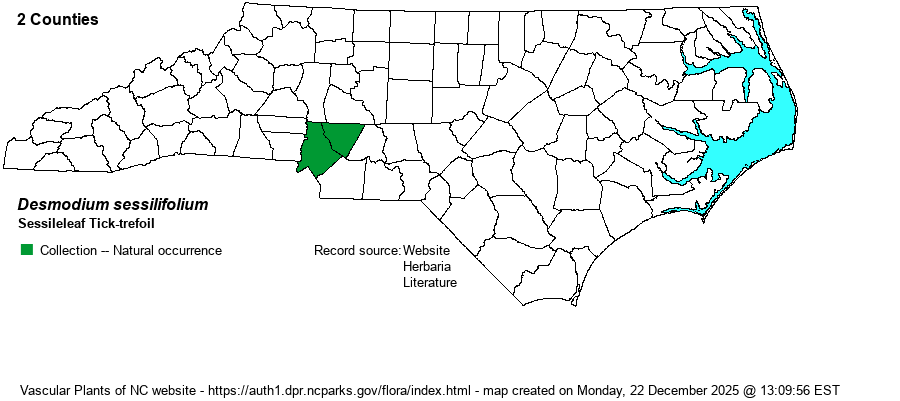| Author | (Torrey) Torrey & A. Gray | |
| Distribution | Formerly reported as a specimens from Cabarrus and Mecklenburg counties. As there are scattered records for northern VA and several in SC, including York County, just over the NC state line, there is hope that additional records can be forthcoming in the state.
This is primarily a Midwestern species, being commonly found from southern MI and eastern KS south to LA and central TX. There are widely scattered records east to MA and northern FL, but most eastern states have only a few county records. | |
| Abundance | Formerly very rare in the southern Piedmont, but now historical. It is listed as State Special Concern - Historical. | |
| Habitat | This is a species of dry soil of open woods and edges, apparently (at least in NC) in somewhat high pH soil, though this is speculation. If it were a species of acidic soils, which are abundant across the state, it should have been (or should be) much more widely reported and collected. | |
| Phenology | Blooms in July and August, and fruits from September to October. | |
| Identification | Though two species of Desmodium in the state's Coastal Plain -- D. strictum and D. tenuifolium -- can look rather similar, this is the only Piedmont species with very narrow, parallel-sided leaflets. The erect stem, which is strongly hirsute and with some uncinate hairs, is normally unbranched, and grows to 2.5-3 feet high. The leaves are almost sessile, with the petiole barely 1/10-inch long; the 3 leaflets are mostly linear to very narrowly elliptic, being about 2-2.5 inches long but only about 2/5-inch wide. At the top of the stem is a narrow panicle of flowers reaching about 6-8 inches tall, with each pink flower only about 1/5-inch across. The pods have very few loments (segments), generally just 1-3. Sadly, several of the few sites where it was formerly found have now been developed, as they grew in the Charlotte metro area -- a bad place to be a rare plant! | |
| Taxonomic Comments | None
| |
| Other Common Name(s) | None | |
| State Rank | SH | |
| Global Rank | G5 | |
| State Status | SC-H | |
| US Status | | |
| USACE-agcp | | |
| USACE-emp | | |

